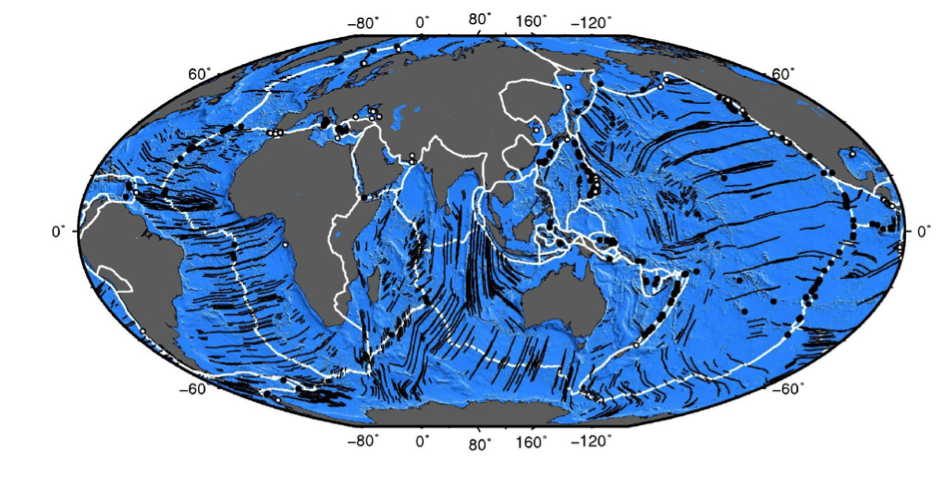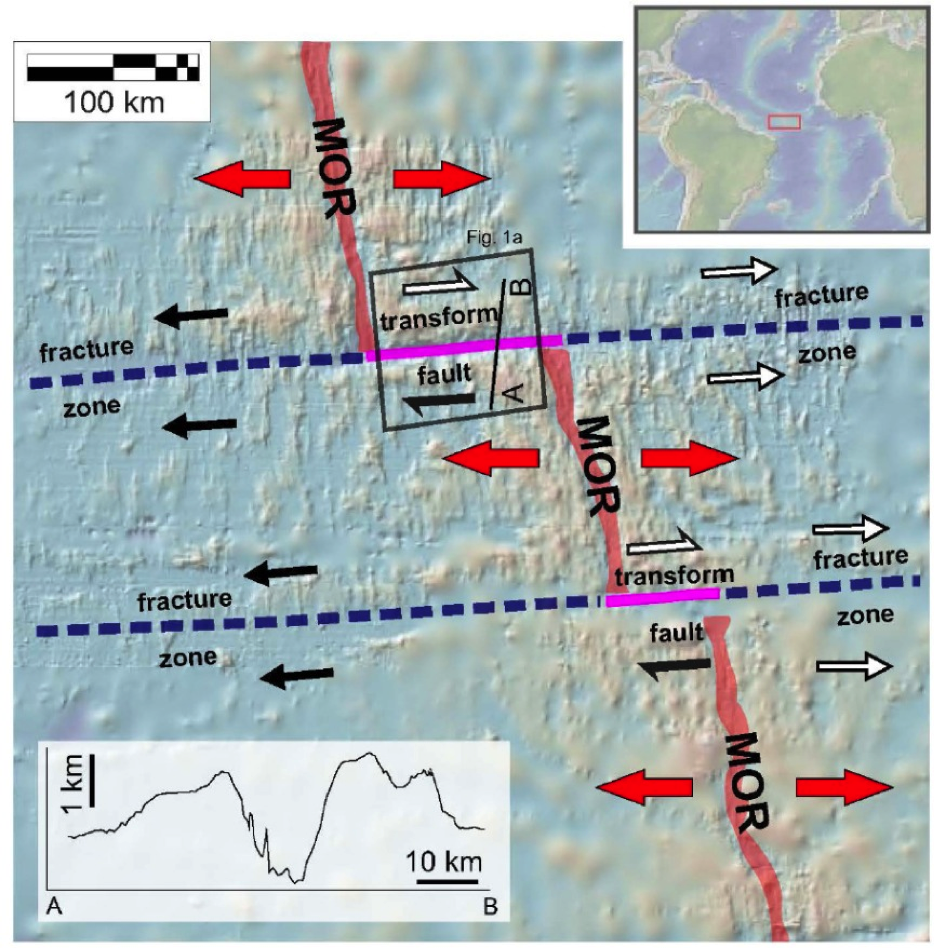
Seismicity and transform faults

Oceanic and continental transform faults occur where two tectonic plates slide past one another. Fracture zones extend past the active transform faults, but seafloor on either side of a fracture zone is moving in the same direction. In other words, marine transform faults and associated fracture zones (MTFFZ) represent the morphological manifestation of the ongoing plate tectonic activity governing our planet. Being generally long and deep structures which cut the entire lithosphere, they can generate large magnitude earthquakes, which could trigger destructive tsunamis particularly harmful when these structures are located close to big metropolitan areas such as San Francisco in the USA, or Istanbul in Turkey. Examples of offshore large-scale earthquakes include the Magnitude 8.6 Sumatra-Wharton Basin Earthquake in 2012, or the events along the Atlantic Azores-Gibraltar Fracture Zone in 1755 (the Mw > 8.5 Great Lisbon Earthquake) and in 1941 (M8.4).
MTFFZ have been recognized since the birth of plate tectonics in the early 1960s, but their mechanical behaviour is far from being fully understood. It has been observed that large earthquakes along the transform faults are commonly preceded by foreshocks and by precursory changes in the seismic properties of the fault zone. These precursors are suggested to be fluid-related processes that change the rock properties just before ruptures. For these reasons transform faults may be ideal locations for multi-parametric monitoring also when searching for variations in geochemical signals as precursors for seismic activity.
Oceanic transform plate boundaries and hydrothermal circulation.
It has been recently discovered that these penetrating fractures act as pathways for deep fluid migration through the host rocks, putting the surface of the Earth in contact with the rocks of the mantle. The surface seepage of deep sourced fluids fosters physical, chemical and biological processes. Here complex chemical reactions and mineralogical transformations are coupled with the thriving of unique life forms, in oases sheltered by these morphological barriers.

This work was inspired by many discussions during the EU-funded network FLOWS (2013–2018). The objective of FLOWS was to merge the expertise of a large number of research groups and further interdisciplinary knowledge on how seep fluid (bio)geochemistry relates to seismicity. The publication is free to access.
Citation: Hensen, C., et al. (2019). "Marine Transform Faults and Fracture Zones: A Joint Perspective Integrating Seismicity, Fluid Flow and Life." Frontiers in Earth Science 7(39).




